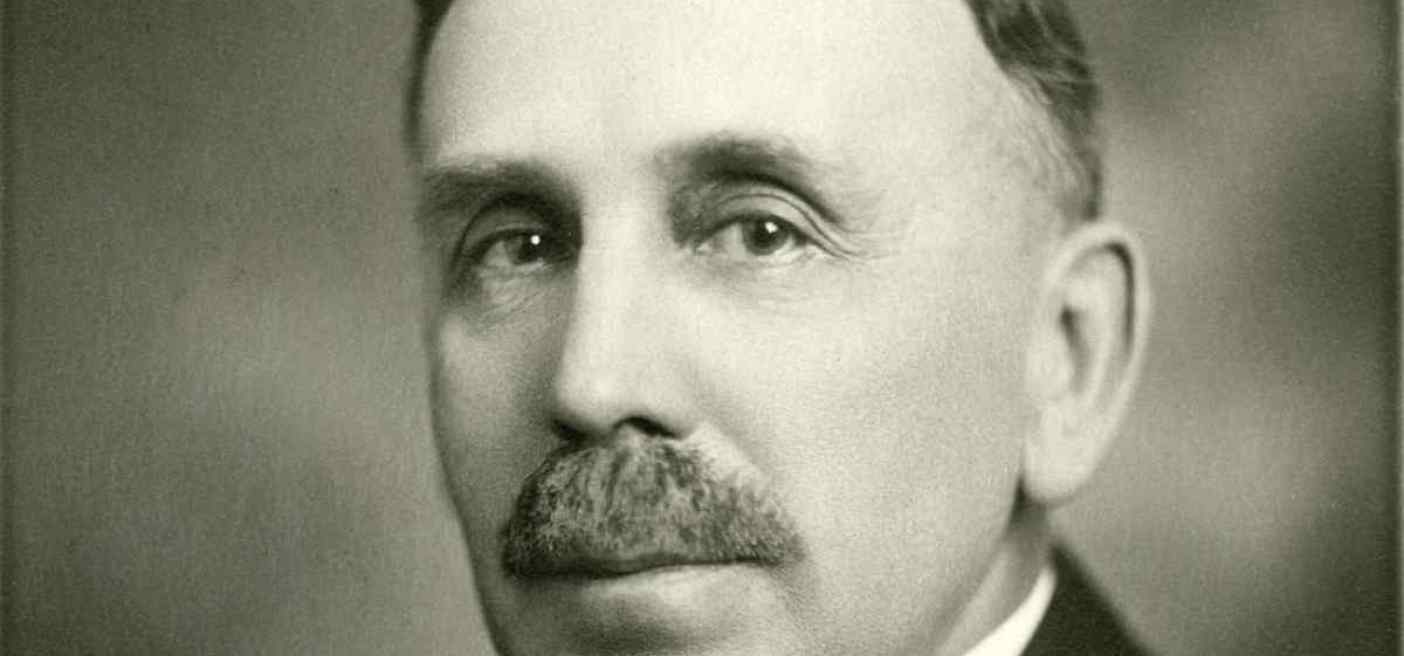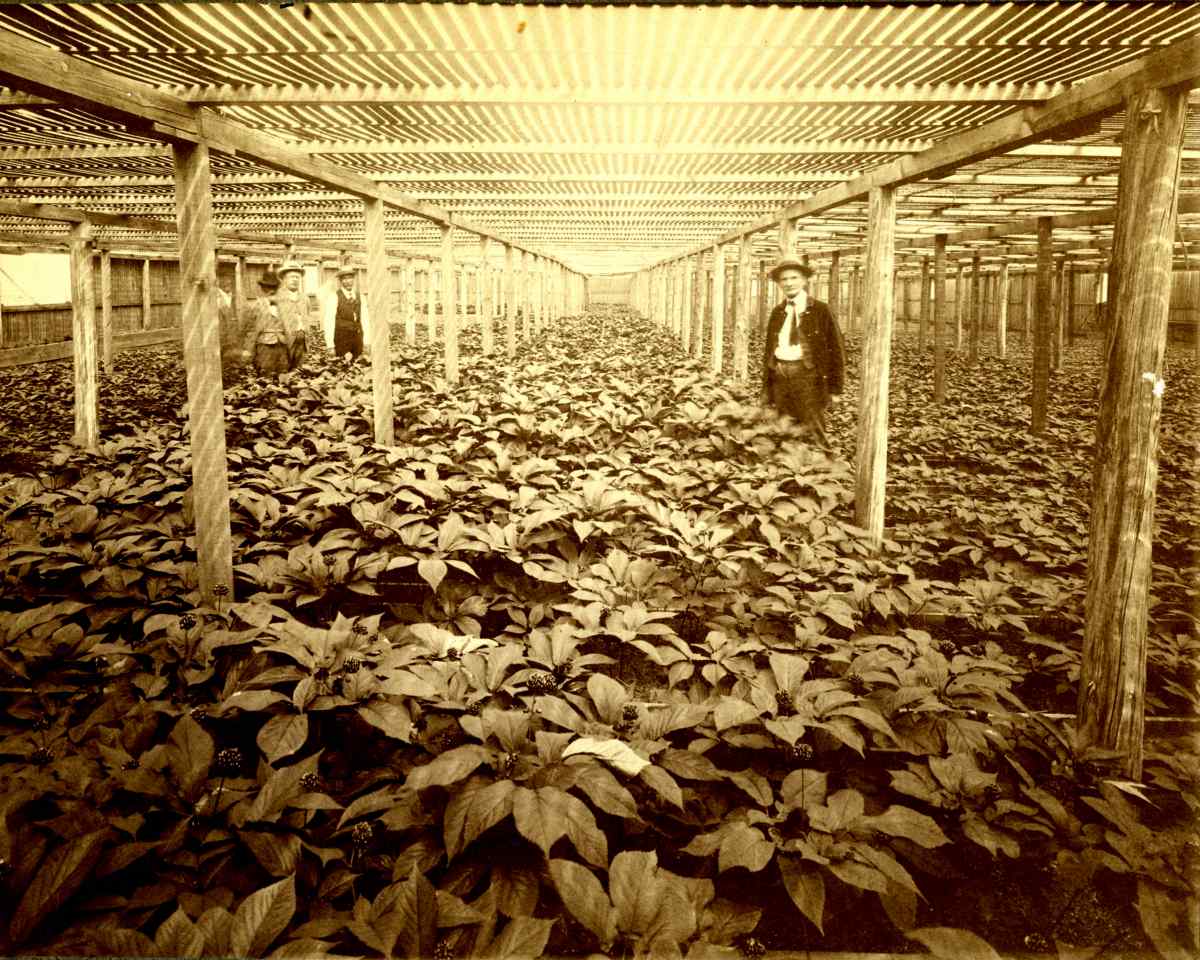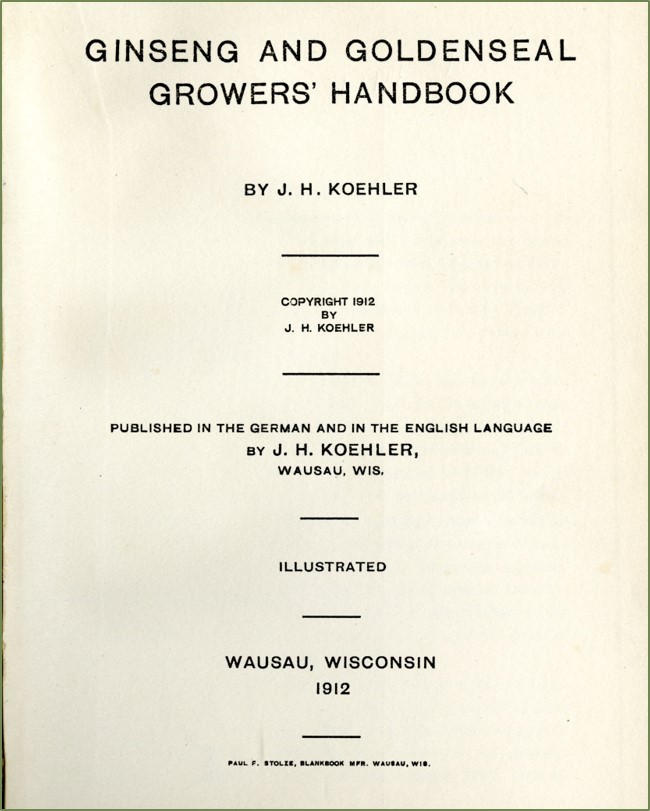Wausau's Ginseng King

During his youth in the early 1880s, John H. Koehler remembered being enamored with the ginseng plants he encountered in the shaded forest near his family farm in Hamburg Township. Although it would take a few years before he returned to the crop, Koehler would become a major figure in the development of the industry.
John was considered a sickly child, and so his parents decided to send him to the Wausau Normal School. Their son was clearly not suited for a life as a farmer, and so they hoped to let him have a good life as a teacher. But after completing his education, John took a job as a clerk with a local lumber company, and would go on to become a very successful land agent by the end of the nineteenth century. But he never forgot the strange plant with bright red berries.

^ A page from the 1895 Wausau City Directory. During his career as a land agent, Koehler was credited with personally bringing some 500 families to Marathon County.
The valuable ginseng root had been gathered from the woods where it grew wild for generations, and there had long been interest in growing it on farm. After a number of disastrous attempts to transplant the crop onto a farm in the 1870s, almost everyone had come to belive it was simply impossible to grow ginseng outside its natural environment or in larger quantities.
But in the 1890s, advances that led to ginseng being cultivated in small batches out East, and when Koehler heard about a successful farm in Missouri, he decided to try ginseng farming for himself. He resigned his position and convinced his family to let him try raising some of the crop on the farm. In those early years Koehler was derided as crazy and he was close to financial ruin before he found success.
And find success as a ginseng farmer he did. In 1901, Koehler established the Wisconsin Ginseng Garden, the first of its kind in Marathon County. While his first garden was modest, it proved he could successfully grow ginsing, and he would go on to found the larger Wausau Ginseng Company in 1908 and the Badger Ginseng Gardens in 1910.

^ J.H. Koehler's Badger Ginseng Garden, circa 1910
Because the ginseng farm was a very new thing, and because of the many difficulties in growing ginseng, Koehler recognized that the would-be ginseng farmers needed to work together. He was a founding member of both the Wisconsin and American Ginseng Growers Associations. These associations helped farmers compare experiences to learn what worked and what did not when figuring out how to grow ginseng, as well as functioning as a cooperative to provide resources for farmers to market and sell their crops in international markets.

^ The title page of Koehler's Ginseng and Goldenseal Growers' Handbook, published in 1912 in both English and German. Koehler noted in the introduction that he was forced to write the book because he had been receiving too many letters from people asking for his advice and with questions about the crop. So the book was published to answer those questions.
Koehler became such an expert in the field of ginseng farming, that he literally wrote the book on how to do it. In 1912, he published the Ginseng and Goldenseal Growers’ Handbook. The book outlined everything a potential ginseng farmer needed to know about the crop, from the basic history and uses to detailed steps that took the process from planting seeds to shipping the cleaned and dry roots to market.
After the 1927 harvest, Koehler retired from the ginseng industry. By that point others had eclipsed his successes as a ginseng farmer (notably the Fromm Brothers, who would have a hundred acres of ginseng undercultivation at once, compared to 14 acres at Koehler's peak). But Koehler’s great contribution to the industry was his ability to bring people together and in helping others get started, and for that reason a 1930 article in the Milwaukee Journal dubbed him, the “ginseng king.”
